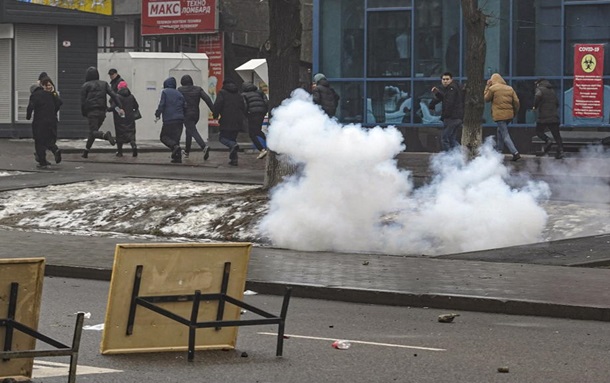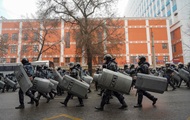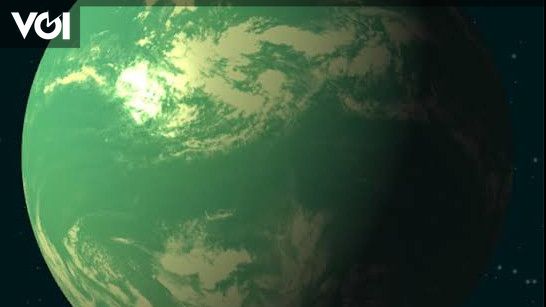The siloviki and Russia saved the regime
–
–
The situation in Kazakhstan may still turn in different directions, but so far it looks like President Tokayev has won the most from the current crisis
With the help of the OKDB forces, the Kazakh authorities managed to take control of the situation in the country. According to experts from the Carnegie Moscow Center Alexander Gabuev and Temur Umarov, the main winner of the protests was the President of Kazakhstan, Kassym-Zhomart Tokayev. A couple of days ago, he was only a junior member of the tandem that ruled Kazakhstan, in which the undisputed leader was the country’s first president, 81-year-old Nursultan Nazarbayev. But the protests changed everything.
Taking advantage of the situation?
Tokayev, 68, found himself at the top of the formal pyramid of power in 2019 as a result of the Kazakh successor operation. As part of a controlled transfer of power, Nazarbayev appointed Karim Massimov, the most trusted and competent member of the presidential team, to the post of head of the National Security Committee (KNB), who had previously headed the government and the presidential administration for many years. The KNB is the most powerful special service in Kazakhstan. Despite Nazarbayev’s trust, Masimov himself could not be considered a successor, since public opinion in Kazakhstan is convinced that he is a Uyghur and not a 100% Kazakh. This made him an ideal candidate for the role of transit overseer.
After much hesitation, Nazarbayev chose Tokayev to succeed the already middle-aged career diplomat. Also completely loyal and intelligent, Tokayev spent many years away from Kazakhstan, and therefore did not have his own team in power that could pose a threat to Nazarbayev.
Having shocked the nation with his departure from the presidency in 2019, Nazarbayev retained both formal and informal levers of power. The law on the status of the first president gave him guarantees of personal security, and the chair of the Security Council endowed him with enormous powers – in fact, Nazarbayev could not only set a strategic course, but also veto many decisions of his successor. The design was complemented by the figure of Masimov at the head of the KNB and a cohort of other Nazarbayev nominees who remained in key positions in power.
The Kazakh tandem started working without crises visible to external observers. But the current protests have radically changed this alignment. In a couple of days, President Tokayev broke the supporting pillars of the dual power. First, the government of Askar Mamin, one of the heavyweights of the Nazarbayev era, was fired. Then Tokayev himself took the post of head of the Security Council. And on January 5, the last blow was dealt to the structure, when Karim Massimov was dismissed from office. The new chairman of the KNB is the head of the State Guard, Yermek Sagimbayev, who until last summer headed the security service of President Tokayev. The influential deputy head of the KNB, Samat Abish, Nazarbayev’s nephew, was also dismissed.
However, the fact that in the end Tokayev may turn out to be the main beneficiary of the crisis does not mean that he organized it. Rather, the president took advantage of the suddenly presented chance to consolidate power in his hands, experts say.
 –
–
EPA
–
Moscow victory
One of the confirmations that the current crisis has come as a surprise to the authorities is Tokayev’s decision to call CSTO allies, mainly Russian security officials, to put things in order. Seeking external help to resolve, in fact, an internal conflict is fraught with considerable risks. Nationalist sentiments in Kazakh society are growing from year to year. The opponents of the president could have submitted an invitation to the Russian military as an attempt by Tokayev to keep his regime on the bayonets of the invaders. Similar comments are already being heard in Kazakhstan and in the Kazakh diaspora in Russia.
One can only assume what exactly pushed Tokayev to such a risky step. Perhaps, looking at the footage with the demoralized military and police, Ak-Orda doubted that they had enough loyal security officials capable of putting things in order, especially during a change in the leadership of the special services. Against this background, seeking help from the CSTO seemed less of a risk than the threat of losing control over Alma-Ata and other large cities.
Moscow has solved several problems at once. First, it has retained a friendly regime in Kazakhstan, and this is one of the fundamental interests of Russian foreign policy, and all means are good for its implementation. Secondly, the authority of the CSTO is rising, which has been shaken after the recent events in Kyrgyzstan and Karabakh. Until recently, many thought that the organization and its collective rapid reaction forces existed only on paper, but now they will show themselves in action.
End of an era
As for Kazakhstan itself, the main result of the current events, no matter how they end, is the end of the long era of Nazarbayev. The protests showed that the current model in Kazakhstan has a lot of flaws, which lead to the accumulation of discontent among millions of people – those who were deprived of the resource pie. But this model has become so embedded in the structure of the economy and political life that the new leader is unlikely to be able to change it, even if he suddenly wanted to do it.
– .

